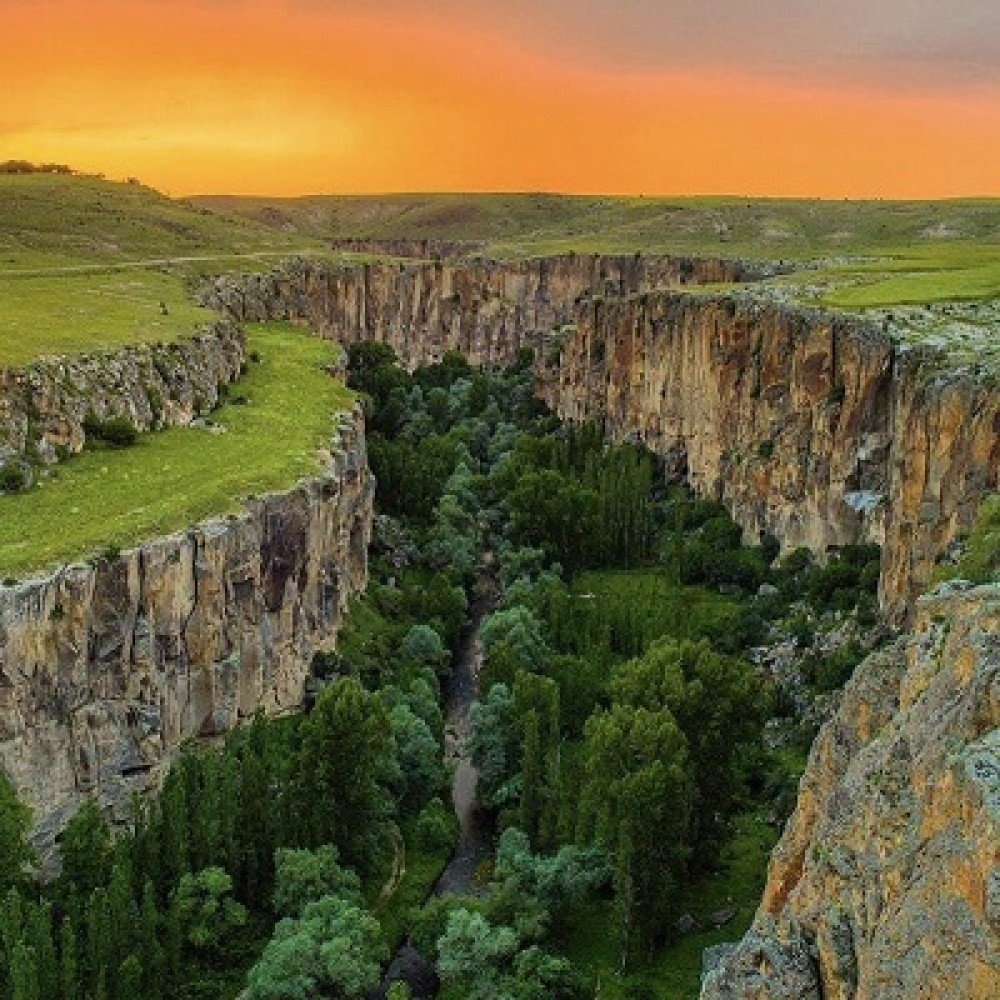Ihlara Valley – Aksaray
the Ihlara valley, called Peristremia in historical sources, with its vegetation, churches and chapels; This is one of the rare places where nature, history, art and culture meet.
The Ihlara Valley, 18 kilometers long, 150 meters deep and 200 meters wide, has thousands of dwellings and, unlike other canyons, is the largest canyon in the world where people lived in the past. The Melendiz River, which shapes and gives life to the Ihlara Valley, is the main source of life here. Hundreds of churches and rock-cut sites, created by lightly working the rocks surrounding the valley, have made the valley one of the most important centers of culture and civilization in the world.
The Ihlara Valley was formed as a result of thousands of years of erosion, as well as the full-flowing Melendiz River, which moves through the territory that collapsed after tectonic uplifts and eruptions of the Khasandagi volcano.
Another notable feature of the Ihlara Valley is its nature. At the very edge of the water at the bottom of the valley, steep as a wall, deep and narrow, there is a dense strip of greenery, consisting of vineyards and orchards. As if nature hid in the valley. Steppe and weak vegetation prevails around the valley. Approaching the slopes of the valley, you will see that a rich and green corner of nature is hidden in the valley. This state of secrecy also defined the special place of the valley. In contrast to the continental climate of the region, a climate close to the Mediterranean is observed at the bottom of the valley. The bottom of the valley is a natural microclimatic zone with this feature. Accordingly, a variety of plants are grown at the bottom of the valley, especially pistachios.
The rock-cut churches of the Ihlara Valley are perfectly preserved as an unparalleled historical treasure. These frescoed churches and settlements, created by simple excavations in the rocks from the early years of Christianity, are located in the Ihlara Valley, which stretches for 14 kilometers from Ihlara to Selime. The first examples of these churches in the Ihlara Valley, where nature and history coexist in the middle of the Cappadocia River (Pathamos Kapadocus) in the first centuries, were built in the 4th century. seen before the turn of the century. Church painting technique can be divided into two parts. The churches around Ihlara show features known as the “Cappadocia type”. Examples of this are the churches of Egritash, Agachalti, Kokar, Pirenliseki and Yylanli. Those in the Belisirma section are decorated with paintings of the Byzantine type.

